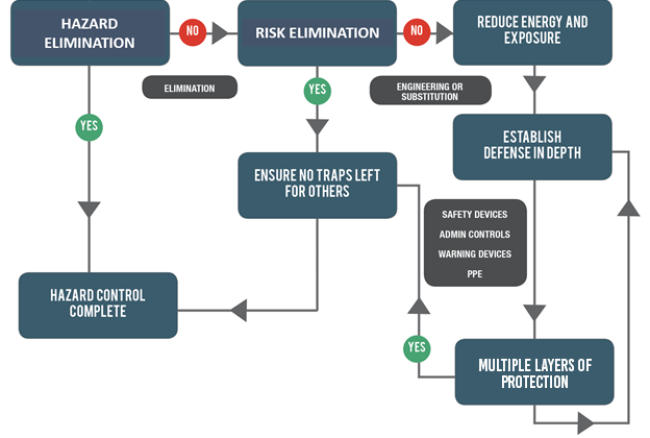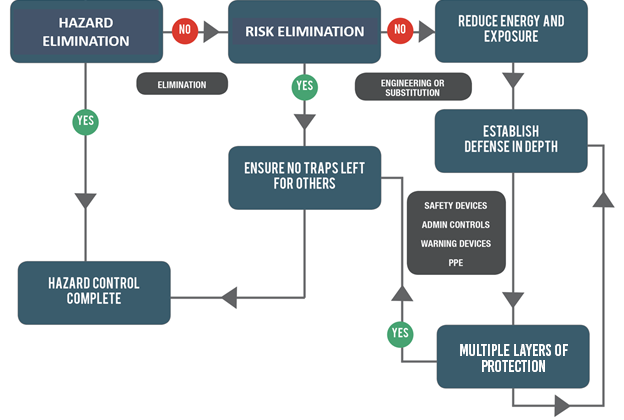
The Art of Safety – A New Hierarchy
Personal protective equipment should always be used and never be needed.
Given the predictable nature of hazards, how and why do incidents occur? Think about this: If I know the winning numbers ahead of a lottery drawing, it’s simple for me to be 100% successful at winning the lottery money. So, if we know how hazards are going to act and how they cause harm, why aren’t we 100% successful at safety? It’s because we don’t fully grasp and utilize the Art of Safety, or how and why you must understand, lead, develop and protect people.
That’s why I wrote the book “Frontline Incident Prevention – The Hurdle: Innovative and Practical Insights on the Art of Safety” and why I am focusing my 2023 Incident Prevention articles – and their corresponding free webinars – on the Art of Safety. In this article and its associated webinar, we’ll discuss how to identify hazards, assess risk and mitigate hazards properly.
Never Let the Other Team Shoot (But Have a Goalie Just in Case)
How ridiculous would a soccer coach look if they put their goalie on the field and merely said, “Hey, goalie, good luck. Stop all the shots.” The coach would look quite ridiculous, and the team would probably lose every game because they are using what should be their last line of defense as their first and only line of defense. In the safety world, it seems equally ridiculous for the hazard mitigation plan to be donning personal protective equipment and saying, “Hey, PPE, good luck. Stop all the hazards.”
The absolute best soccer strategy would be to develop and execute a plan that never allows the other team to take a shot at our goal. We would employ everything we have available to use our goalie as little as possible. That goalie truly becomes the last line of defense. The same is true in safety and leads us to the principle that PPE should always be used and never be needed. Think about flame-resistant clothing, for example. If you need it, that means you are in an arc flash, which is all the reason in the world to always wear the clothing and all the reason in the world to never need it.
The plan we must execute to make this happen involves three simple steps.
1. Hazard and risk assessment. Identify hazards as any existing or potential source of energy, and identify risk as how much energy there is or could be if someone were exposed to it.
2. Safety by design. Turn it off, turn it down and turn away. “Turn it off” means eliminating the source of energy. “Turn it down” means reducing the amount of energy. “Turn away” means reducing exposure.
3. Defense in depth. After energy and exposure have been reduced as much as possible, defense in depth calls for establishing multiple layers of protection using administrative controls, warning devices and PPE.
Summary
I consider risk assessment and hazard mitigation critical knowledge to both promote safety and work safely. When used correctly, the hierarchy of controls allows us to encourage people to want to protect themselves from hazards rather than forcing them to follow rules.
The next time you look at the hierarchy of controls, draw a line right above the administrative controls. If everything you have discussed is below that line, there is opportunity for improvement. You have limited yourself to PPE as the first and only line of defense and possibly defense in depth, which isn’t a bad thing, but I want to be clear: There are better options, and you need to be above the line. Getting above the line requires safety by design and thinking about words like “elimination,” “reduction” and “substitution,” along with engineering controls. This flowchart may help with the decision-making process.

As this is the last in this series of articles, I want to remind you of this statement that summarizes most of the content: Lead and protect people rather than managing robots and pleasing systems. I’ll also end this article by reminding you of the three simple steps I included above. That’s it. C5 safety leaders armed with these tools can mitigate hazards that have been identified as energy and achieve exceptional safety by reducing error, preventing harm and encouraging growth.
From Words to Action
The words in this article will not save lives, but what you do with them can. Attend the free January 10 webinar and learn how to turn these words into action. We’ll discuss the article, and you’ll have the opportunity to ask questions and add value to the discussion. I hope you’ll attend and look forward to seeing you there. I also encourage you to read “Frontline Incident Prevention – The Hurdle: Innovative and Practical Insights on the Art of Safety” and enroll in The Art of Safety course available at https://ip-institute.com.
About the Author: David McPeak, CUSP, CIT, CHST, CSP, CSSM, is the director of professional development for Utility Business Media’s Incident Prevention Institute (https://ip-institute.com) and the author of “Frontline Leadership – The Hurdle” and “Frontline Incident Prevention – The Hurdle.” He has extensive experience and expertise in leadership, human performance, safety and operations. McPeak is passionate about personal and professional development and believes that intrapersonal and interpersonal skills are key to success. He also is an advanced certified practitioner in DISC, emotional intelligence, the Hartman Value Profile, learning styles and motivators.
About Frontline Fundamentals: Frontline Fundamentals topics are derived from the Incident Prevention Institute’s popular Frontline training program (https://frontlineutilityleader.com). Frontline covers critical knowledge, skills and abilities for utility leaders and aligns with the Certified Utility Safety Professional exam blueprint.
Webinar: A New Hierarchy
January 10, 2024, at 11 a.m. Eastern
Visit https://ip-institute.com/frontline-webinars/ for more information.


